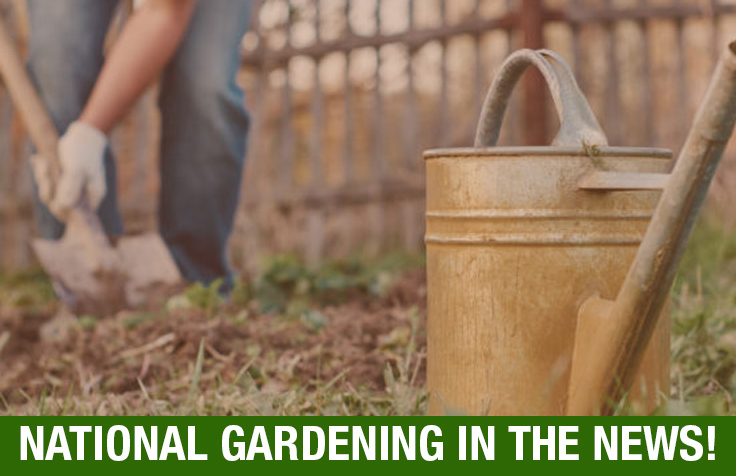
By by Natalie LaVolpe – Featured, Home and Garden
Forced to shelter in place, most of us are coming down with a bad case of cabin fever. Instead of worrying about the future and whether that scratchy throat you woke up with this morning is something serious, plant a Victory Garden.
During World War II the nation fell on hard times. With fresh fruits and vegetables in short supply, food needed to be rationed and the government ultimately turned to the citizens to do their part to keep the nation fed. Families on the home front were encouraged to “put their idle land to work” and to produce “victory” gardens to combat the food shortage.
Slogans such as “Dig for Victory,” “Every War Garden is a Peace Plant,” “Sow the Seeds of Victory,” and “Uncle Sam Says, ‘Garden to Cut Food Costs'” covered pamphlets. People quickly realized it was their national duty to participate.
In 1943, nearly forty percent of all fruits and vegetables grown in the US were grown in victory gardens. There were gardens planted in backyards, empty lots, and on the top of city rooftops. Neighbors and communities worked together and formed cooperations. Even schools got involved to provide supplemental food for lunches. An estimated 20 million victory gardens were planted, with about 9-10 million tons of fruits or vegetables harvested. Even Eleanor Roosevelt took part by planting her own victory garden at the White House in 1943.
What Were Victory Gardens?
 |
|
|
Photo courtesy of nationalww2museum.org
|
Victory Gardens, also called “war gardens” or “food gardens for defense” were gardens planted by ordinary citizens during World War I and World War II to provide some relief in the public food demands. Victory gardens were soon “cropping up” across the United States and Canada. Victory gardens were considered a civil morale booster.
Ordinary citizens were growing tomatoes, carrots, lettuce, beets, and peas. Victory gardens introduced us to Swiss chard and kohlrabi because they were easy to grow.
The United States government even provided growing plans and tips on how to grow a backyard garden, as well as a recipe book with home-grown vegetable recipes. Families were also encouraged to can their excess veggies to send overseas to troops. Victory gardens made sure that there was enough food for the fighting soldiers.
A Sense of Purpose
Victory gardens gave Americans on the home front a sense of purpose and a way to contribute to the war effort while also providing the food needed to sustain a nation during a time of need. But after the war ended in 1945, victory gardens began to disappear. Grocery stores and commercial food began to become more widely available so most Americans didn’t see the need to grow anymore. Gardening became a hobby rather than a necessity for most people.
Fast Forward to Today
The food supply and state of health in our country are once again facing new challenges. As a nation, we do not consume enough fruits and vegetables. A large portion of our food makes long journeys before even hitting our tables, losing nutrients along the way. A sizable percentage of our food is grown with pesticides. And rising food prices (especially for organic food) only exacerbates the problem. Today, because many have concerns about the quality of our food, home gardening is making a resurgence.
Grow Your Own Food
Not only is gardening an excellent way to reduce your grocery bill, but it is also a great way to bring your family (and neighborhood) together. Here are some compelling reasons why you should consider starting your own victory garden this year:
- Growing your own fresh fruits and vegetables is a great way to stretch your food budget.
- Homegrown vegetables provide readily-available nutrition (every day a vegetable is off the vine it loses its health benefits).
- No harmful chemicals are sprayed on your veggies.
- It would provide fresh air and outdoor exercise for the whole family.
- Forges bonding experiences for family and community members.
- Allows you to control your food supply and be more self-sufficient.
- Gardening is a great activity to help relieve stress and improve sleep quality.
- Reduces your carbon footprint.
- Statistically, gardeners live longer!
Don’t let lack of space deter you. No matter how much room you have, you can grow your own vegetables in your backyard (or front yard, in some cases). Even a 10 x 10 ft garden can grow a tremendous amount of food for your loved ones.
